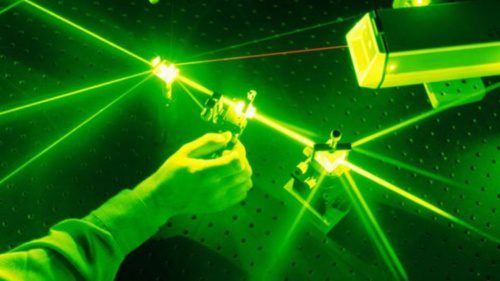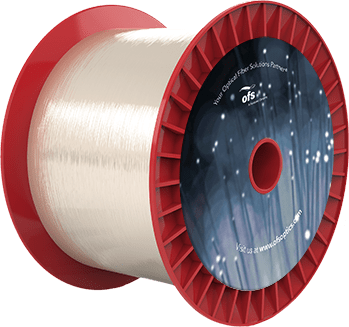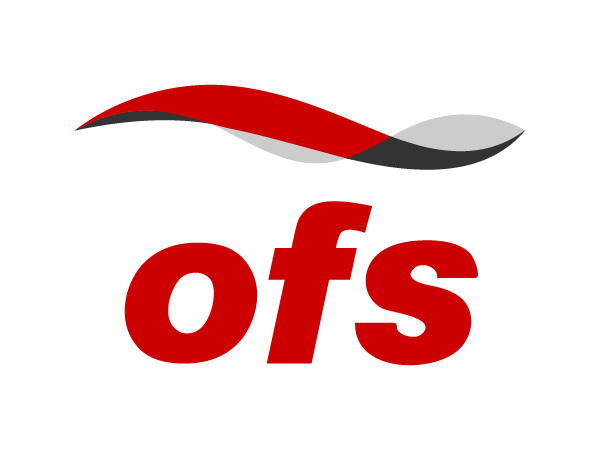As transmission speeds over optical fiber networks in the enterprise increase to 10 Gigabits per second (Gb/s) and beyond, a relatively new term – “laser-optimized fiber” – has crept into the industry’s vocabulary. What is laser-optimized fiber? What do you need to know about it? And what exactly does the term “laser- optimized” mean? Understanding the answers to these questions will help you prepare for the latest wave in optical communications for enterprise networks.
Why have optical fibers been “optimized” for use with lasers?
Older “legacy” optical fiber systems (Token Ring, Ethernet, FDDI, ATM) used in premises applications operated at relatively slow speeds in the range of 4 to 155 Megabits per second (Mb/s). These systems utilized inexpensive light sources called Light Emitting Diodes (LEDs), which were perfectly adequate for these slower speeds. Multimode fibers used in these systems were rated to certain minimum bandwidths, typically:
- 160 MHz/km over 62.5/125 μm fiber at 850 nm
- 500 MHz/km over 50/125 μm fiber at 850 nm
- 500 MHz/km over both products at 1300 nm
These fibers were tested for bandwidth using an Overfilled Launch (OFL) test method, which accurately replicated real-life performance with an LED.
As the demand for bandwidth and higher throughput increased, especially in building and campus backbones, LEDs could not keep pace. With a maximum modulation rate of 622 Mb/s, LEDs would not support the 1 Gb/s and greater transmission rates required. One could make use of traditional lasers (Fabry-Perot, Distributed Feedback) typically used over single-mode fiber. However these are considerably more expensive due to the higher performance characteristics required for long-distance transmission on single-mode fiber.
In response, the industry developed a new high-speed laser light source called a Vertical Cavity Surface Emitting Laser (VCSEL). These VCSELs are inexpensive and well suited for low-cost 850 nm multimode transmission systems, allowing for data rates of 1 Gb/s and 10 Gb/s in the enterprise. With the emergence of these VCSELs, multimode fiber had to be “optimized” for operation with lasers.
What’s the Difference Between a VCSEL and an LED?
VCSELs provide higher power, narrower spectral width, smaller spot size and faster data rates than LEDs. All of these advantages add up to a significant performance boost. This assumes, of course, the fiber itself does not hinder performance. To understand why this could occur, we need to recognize the differences between VCSELs and LEDs and how they transmit signals along a multimode fiber.
All LEDs produce a smooth, uniform output that consistently fills the entire fiber core and excites the many hundreds of modes in the fiber. The bandwidth of the fiber is determined by the aggregate performance of all the modes in the fiber. If a few modes lag behind or get ahead due to modal dispersion, they have little impact on bandwidth because many other modes are carrying the bulk of the signal.
The energy output of a VCSEL is smaller and more concentrated than that of an LED. As a result, VCSELs do not excite all the modes in a multimode fiber, but rather only a restricted set of modes. The bandwidth of the fiber is dictated by this restricted set of modes, and any modes that lag or get ahead have a much greater influence on bandwidth.
Typically, a VCSEL’s power would be concentrated in the center of the fiber, where older fibers were prone to defects or variations in the refractive index profile (the critical light-guiding property in the core of the fiber), resulting in poor transmission of the signal. That is why some fibers may actually perform poorly with a VCSEL compared to an LED.
To complicate matters, the power profile of a VCSEL is nonuniform and fluctuates constantly. It changes sharply across its face, varies from VCSEL to VCSEL and changes with temperature and vibrational fluctuations. Consequently, individual VCSELs will excite different modes in a certain fiber at any given time. And because different modes carry varying amounts of power, the fiber’s bandwidth can vary in an unpredictable manner.
Why are laser-optimized fibers the best choice for use with VCSELs?
With the advent of VCSELs, it became apparent that the traditional multimode fiber deployed for LED systems did not take full advantage of the performance benefits of VCSELs.
To fully capitalize on the benefits that VCSELs offered, fiber manufacturers developed laser-optimized multimode fiber (LOMMF). LOMMF is specifically designed, fabricated and tested for efficient and reliable use with VCSELs.
LOMMFs should have a well-designed and carefully controlled refractive index profile to ensure optimum light transmission with a VCSEL. Precise control of the refractive index profile minimizes modal dispersion, also known as Differential Mode Delay (DMD). This ensures that all modes, or light paths, in the fiber arrive at the receiver at about the same time, minimizing pulse spreading and, therefore, maximizing bandwidth. A good refractive index profile is best achieved through DMD testing.
VCSELs and LOMMF provide tremendous flexibility and cost efficiency in “freeing up” bandwidth bottlenecks in the enterprise today and well into the future. LOMMF is completely compatible with LEDs and other fiber optic applications (there are no special connectors or termination required and no effect on attenuation). LOMMF can be installed now and utilized at slower data rates until the need arises to increase network speed to 1 or even 10 Gb/s. At that point, you only need to upgrade the optics modules to VCSEL-based transceivers. There is no need to pull new cable.
Can you use any laser-optimized fiber for 10 Gb/s?
 No — it is important to note that not all laser-optimized fiber is 10 Gb/s capable. If 10 Gb/s capacity is in your future, you must make sure that the LOMMF you’re installing now is capable of handling 10 Gb/s. The first laser-optimized fibers, introduced to the market in the mid-1990s, were designed for 1 Gb/s applications. Available in both 62.5/125 µm and 50/125 µm designs, these fibers extended the reach capability of 1 Gb/s systems beyond what the industry standards stated. For instance, OFS 1 Gb/s Laser Optimized 62.5 Fiber can go 300 meters in cost-effective, 1 Gb/s 850 nm (1000BASE-SX) systems. 50/125 µm fibers offer even greater performance, with a reach of 600 meters or more. These 1 Gb/s LOMMFs, coupled with 850 nm VCSELs, allow for the lowest systems cost for building backbones and short-to medium-length campus backbones
No — it is important to note that not all laser-optimized fiber is 10 Gb/s capable. If 10 Gb/s capacity is in your future, you must make sure that the LOMMF you’re installing now is capable of handling 10 Gb/s. The first laser-optimized fibers, introduced to the market in the mid-1990s, were designed for 1 Gb/s applications. Available in both 62.5/125 µm and 50/125 µm designs, these fibers extended the reach capability of 1 Gb/s systems beyond what the industry standards stated. For instance, OFS 1 Gb/s Laser Optimized 62.5 Fiber can go 300 meters in cost-effective, 1 Gb/s 850 nm (1000BASE-SX) systems. 50/125 µm fibers offer even greater performance, with a reach of 600 meters or more. These 1 Gb/s LOMMFs, coupled with 850 nm VCSELs, allow for the lowest systems cost for building backbones and short-to medium-length campus backbones
How do you measure bandwidth for laser-optimized fiber?
Since LEDs have a uniform and consistent power profile that excites all the modes in a multimode fiber, the traditional OFL method of bandwidth measurement accurately predicts bandwidth of fiber for LED applications. But because VCSELs only excite some of the modes in a fiber, and in a varying manner, the OFL bandwidth measurement cannot predict what the fiber’s bandwidth would be if the fiber were to be used in a VCSEL application.
It should become clear now why fiber manufacturers developed laser-optimized fiber, and why DMD testing is so important. The refractive index has to be well designed and controlled to ensure that all modes exhibit minimal DMD and all arrive at the other end of the fiber at the same time. No matter which modes in the fiber are actually guiding the light, those modes will have minimal DMD and provide high bandwidth.
What should you look for in DMD testing?
DMD testing provides a clear picture of how individual mode groups carry light down the fiber, and which mode groups are causing DMD. In fact, that picture is so clear that the standards require fiber to be DMD-tested to ensure adequate bandwidth to the rated distances for 10 Gb/s applications.
Tony Irujo is sales engineer for optical fiber at OFS, a world-leading designer, manufacturer and provider of optical fiber, fiber optic cable, connectivity, fiber-to-the-subscriber (FTTx)and specialty photonics products. Tony provides technical sales and marketing support for multimode and single-mode optical fiber.
Tony has 25 years of experience in optical fiber manufacturing, testing and applications. He started with SpecTran in 1993 as a quality and process engineer and transitioned to more customer-focused roles with Lucent and OFS. He represents OFS in the Fiber Optic LAN Section (FOLS) of the TIA, has authored several papers on fiber technology and applications and is a frequent speaker at industry events. Tony has a Bachelor of Science degree in Mechanical Engineering from Western New England College in Springfield, MA.
Tags: fiber optic network, fiber optic networks

